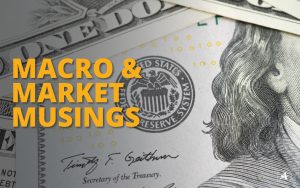Growth: Labor Is A Lagging Indicator 
Employers tend to be shy about shedding workers in a slowdown. They also tend to be hesitant to hire in a recovery. That’s why labor market indicators don’t lead, they lag the economic cycle. The near stall speed of private sector hiring in June may have been a lagged response to the peaking of uncertainty in early April. Now that uncertainty is clearing, production activity is picking up and backlogs of orders are increasing. The labor market may follow.
Inflation: What, Not Whether
While inflation is defined as an increase in the price level, that doesn’t mean every price is rising. It’s always a question of which prices are rising. When inflation was hitting its peak in 2022, 96% of consumption items had rising prices. Inflation was high and it was broad. In July, 75% of items had rising prices. That’s up from 59% in 2024 when inflation was trending lower, but the average going back to 1960 is almost 80%. The breadth of price increases may be peaking and it might not be as persistent as the Fed or market fears.
Policy: From Steady-As-She-Goes To Stop-Go
Most of the time when the Fed pauses after cutting rates, the pause leads to a reversal where they hike rates. There are exceptions where there were short pauses before more aggressive cuts during the Global Financial Crisis and just before COVID. Outside those crises, the Fed took a 10 month pause in 2002 to do some fine-tuning cuts over the next year. The Fed’s target rate is a lot higher now than it was then, but any signaling from the Fed will likely be one that they’re more fiddling with rates to dial them in instead of rushing to move them lower by a lot.
Looking Ahead: Being Picky Despite The Clarity
Corporate earnings have been coming in better than many expected. With clarity on taxes and increasing clarity on tariffs and monetary policy, uncertainty should decline. Less uncertainty should be more conducive to spending and investment. Even if the fundamentals, like earnings, look fine, that doesn’t mean the price investors pay for those fundamentals is attractive across the board. There are a lot of risks to monitor and navigate, like costs rising faster than sales, or rapid growth rates shifting into a slower gear, that could close the wide gap between prices and fundamentals.